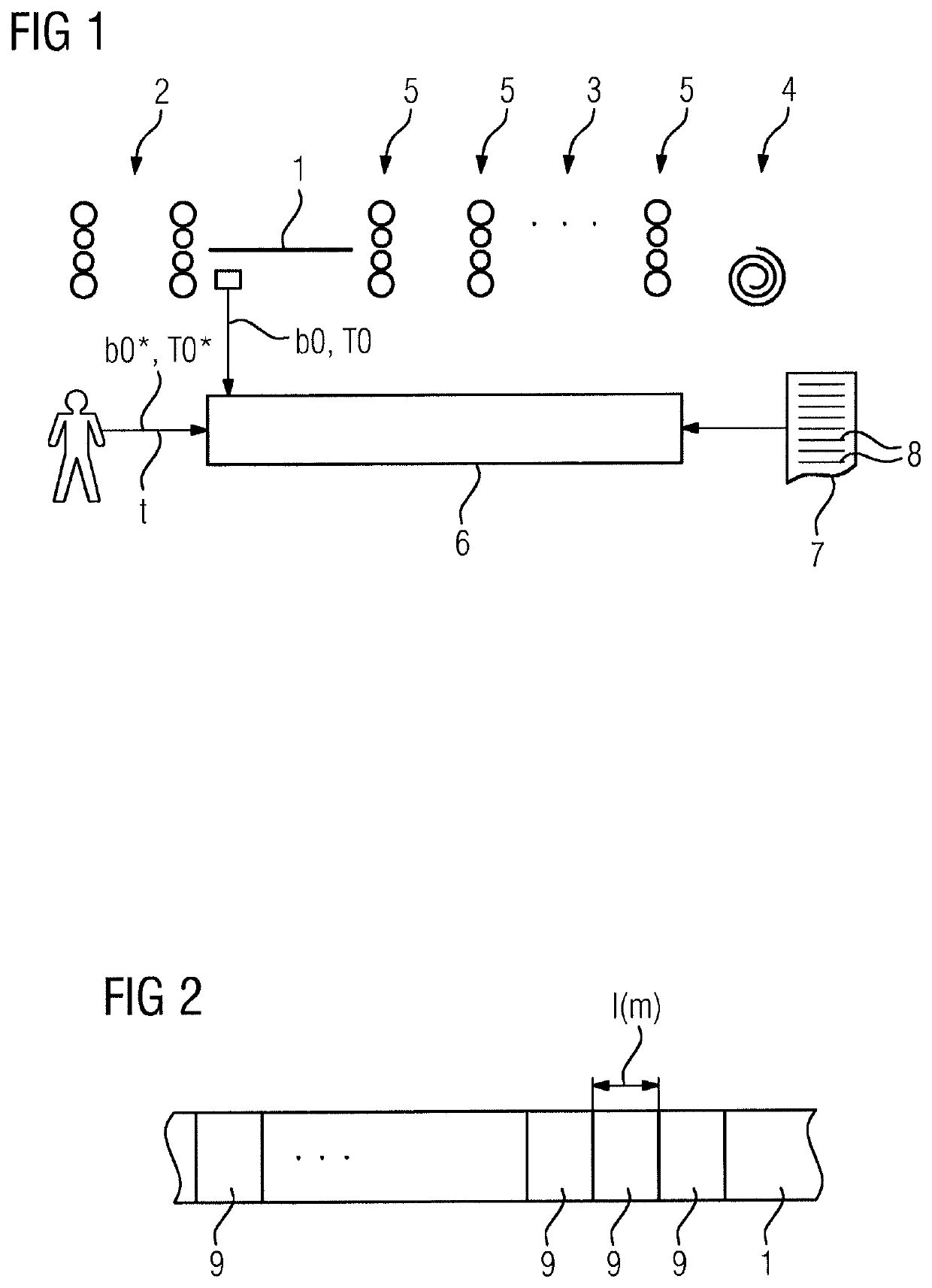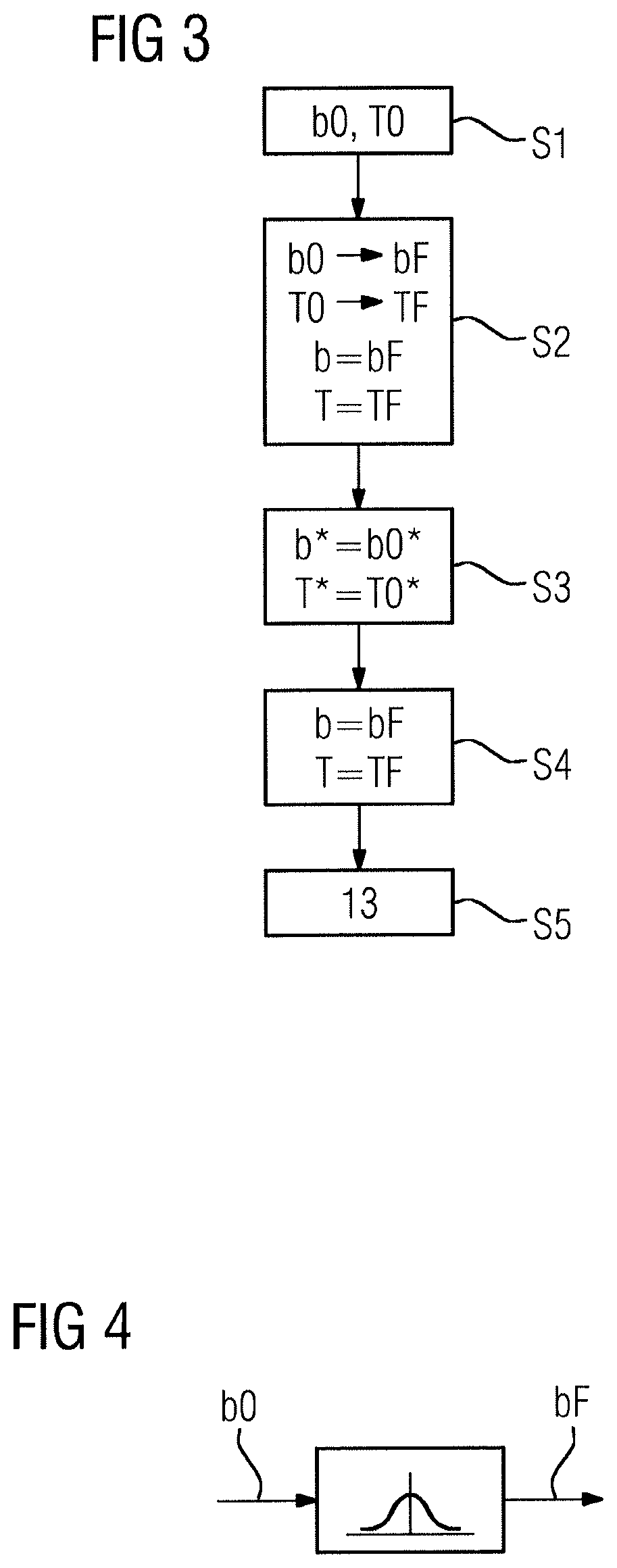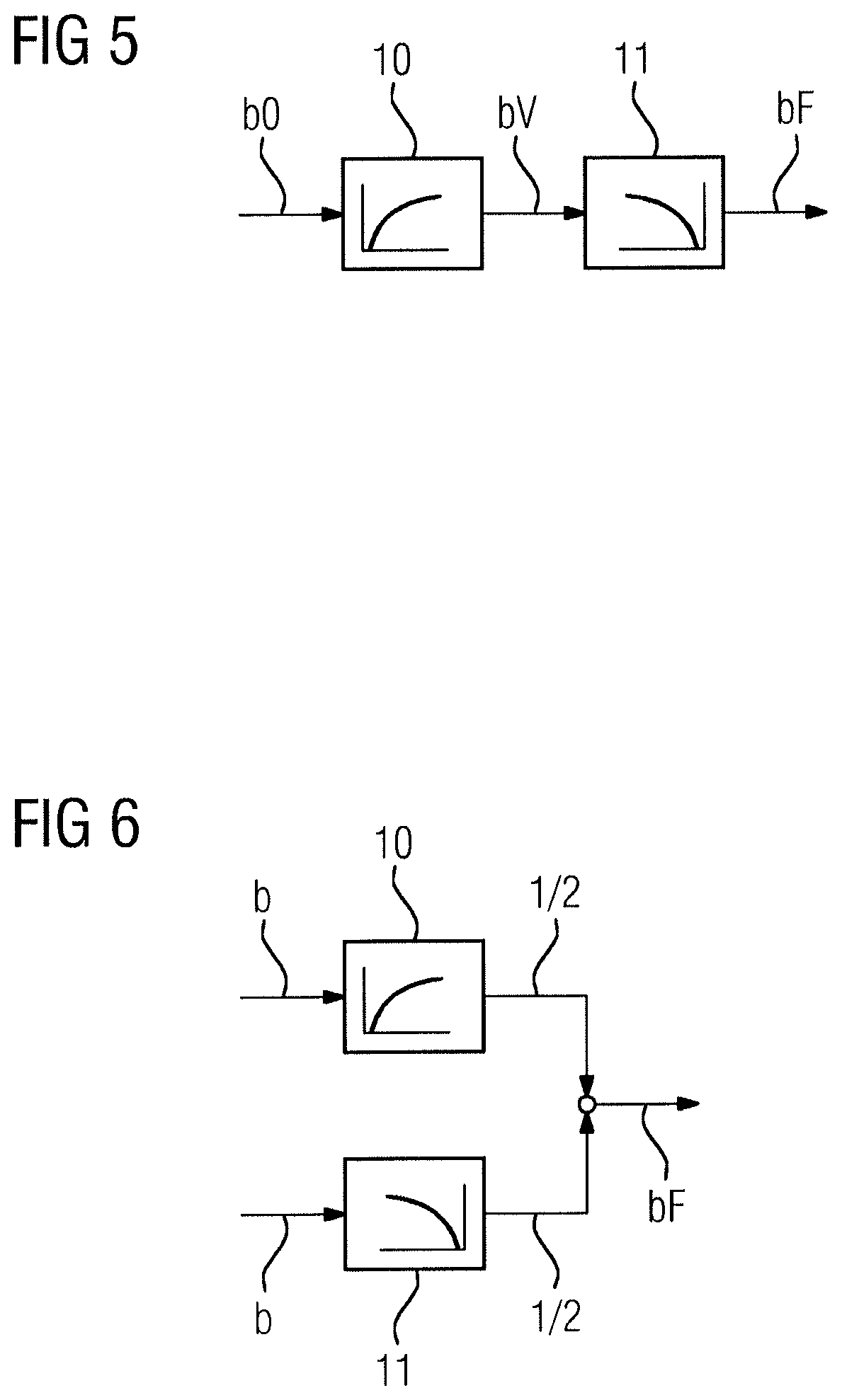Width setting on a finishing train
a technology of finishing train and width setting, which is applied in the direction of metal rolling, metal rolling stands, metal rolling control devices, etc., can solve the problems of uneven widening of metal strips in finishing trains, inadequate methods, etc., and achieves the effect of simple and efficien
- Summary
- Abstract
- Description
- Claims
- Application Information
AI Technical Summary
Benefits of technology
Problems solved by technology
Method used
Image
Examples
Embodiment Construction
[0056]According to FIG. 1, a hot strip train for rolling a metal strip 1 has a roughening train 2, a finishing train 3, and a coiling device 4. The roughening train 2 can be omitted in individual cases—for example, in the case in which the metal strip 1 is already cast relatively thin. The finishing train 3 has, according to FIG. 1, multiple rolling stands 5, through which the metal strip 1 passes in succession. The number of rolling stands 5 is generally between three and eight, in particular between four and seven, for example, five or six.
[0057]The metal strip 1 can be, for example, a steel strip, an aluminum strip, a copper strip, or a strip made of another metal.
[0058]The hot strip train—in particular the finishing train 3—is controlled by a control unit 6. The control unit 6 is programmed using a computer program 7. The computer program 7 comprises machine code 8, which is executable by the control unit 6. The execution of the machine code 8 by the control unit 6 causes the co...
PUM
| Property | Measurement | Unit |
|---|---|---|
| width | aaaaa | aaaaa |
| width | aaaaa | aaaaa |
| temperature | aaaaa | aaaaa |
Abstract
Description
Claims
Application Information
 Login to View More
Login to View More - R&D
- Intellectual Property
- Life Sciences
- Materials
- Tech Scout
- Unparalleled Data Quality
- Higher Quality Content
- 60% Fewer Hallucinations
Browse by: Latest US Patents, China's latest patents, Technical Efficacy Thesaurus, Application Domain, Technology Topic, Popular Technical Reports.
© 2025 PatSnap. All rights reserved.Legal|Privacy policy|Modern Slavery Act Transparency Statement|Sitemap|About US| Contact US: help@patsnap.com



